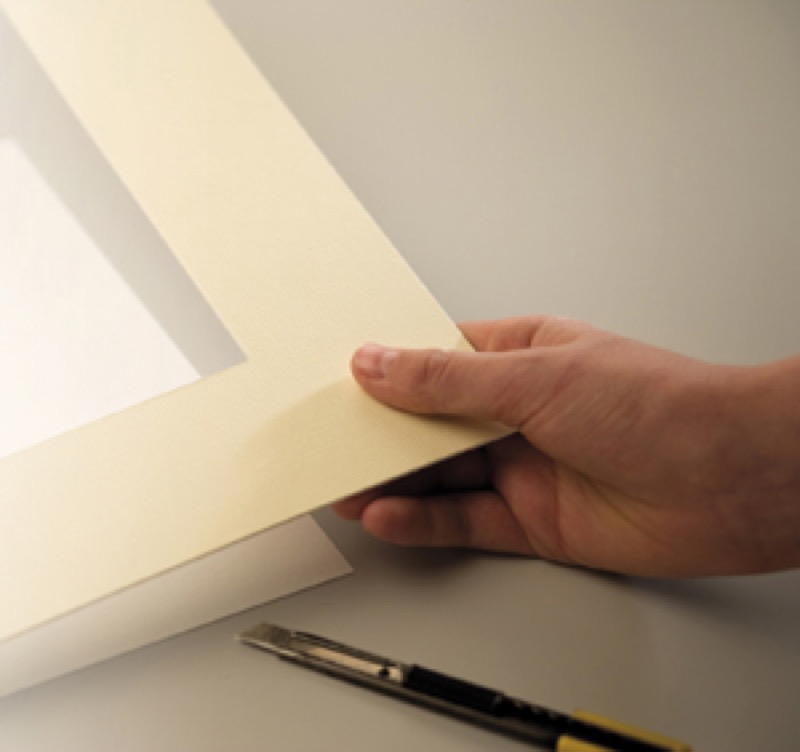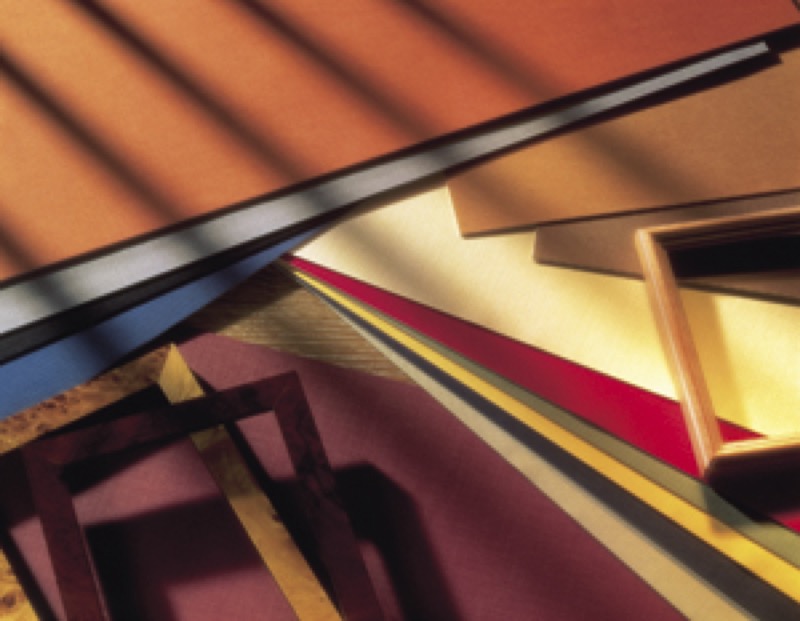In the arts, framing is by far the area which most resembles an exact science… and at the same time it's an art which inspires constantly renewed creativity. Guided Tour…
1. Why frame your art?
The frame and the process of framing have two essential functions:
- to protect,
- to emphasize, like a display case.

2. Package elements
Framing and the elements of the package. The package is made up of several components which surround the artwork. From the bottom to the top, the layers include:
- The backing board, including one or two picture hanging rings,
- the back mat (or mounting) board, which is placed underneath the artwork,
- the artwork itself,
- the mat, with custom margins of varying widths (at least 6 cm on each side),
- the glass 2 mm thick.
One or more bevels and mat liners, intended to create depth, placed between the artwork and the mat.

3. The Mat
Numerous paintings are framed without matting, however most paintings are framed with a mat. A mat provides a custom sized margin, and clearly outlines the parameters of the work. A mat adds an initial element of depth to the work.
- The mat can be cut out from a pre-decorated or custom made from chipboard or paperboard which has been covered in paper, fabric, wood, etc.
- From a wide mat surrounding a small work to tiny margins setting off a poster, mat dimensions are first and foremost a question of taste.
- You may insert two mats, separated by a bevel or a mat liner.
3. Different bevels
Bevels can be divided into three large categories: get to know them!
- 45° beveled edge (English bevel): is the most common. It's usually made from 3 mm thick mat board. The larger the artwork, the thicker the mat you may use. The board is simply cut at a 45° angle. It can be "direct" (the mat has a beveled edge), or detached, which allows the mat to be decoratively covered.
- straight beveled edge : the procedure is the same, but the board is cut at a right angle (90°).
- French beveled edge: wide and deep, it is made by folding paperboard. Volume is achieved by in inserting a piece of foam board between the two folds.
4. Washes and filigree lines
Their delicate appearance can be used to accentuate engravings. A wash is traditionally painted on mat board, in watercolors or with diluted ink. It can be applied to the whole mat.
- For contemporary art work, use textured washes, color applied with a sponge, using a stencil.
- A classic wash is usually used in the center of a series of filigree lines, often six: two of them border the wash, the others succeed one after the other at irregular intervals. Their thickness varies: the thinnest lines are painted on with a quill pen or marker; the thickest lines (several millimeters thick) look elegant when cut from paper, solid or patterned, and glued onto the mat. The last filigree line (the "contre filet") is very fine

5. The benefit of mat liners
They add a touch of refinement. Selected from a contrasting color, they are placed between the artwork and the bevel, between the bevel and the mat, or both. Most mat liners are narrow (from 1 to 3 mm). Any wider and they can be considered a second mat (double mat). They are often made from four strips of paper, glued to the mat.
6. Customize your frame
You can fully customize your work if you decorate and create your own molding strips to set in the frame.
- Choose curved or straight molding strips, in any size from narrow to wide.
- Paint them, cover them with paper or fabric, decorate them with glitter or seashells…
Your goal: let your imagination soar… without losing sight of the characteristics of the work you are framing. You want to prevent the frame and matting from overpowering the artwork. It's quite an art!
Recommended product:
Mi-Teintes® mount boards
See also :
Framing
Difficulties of framing
